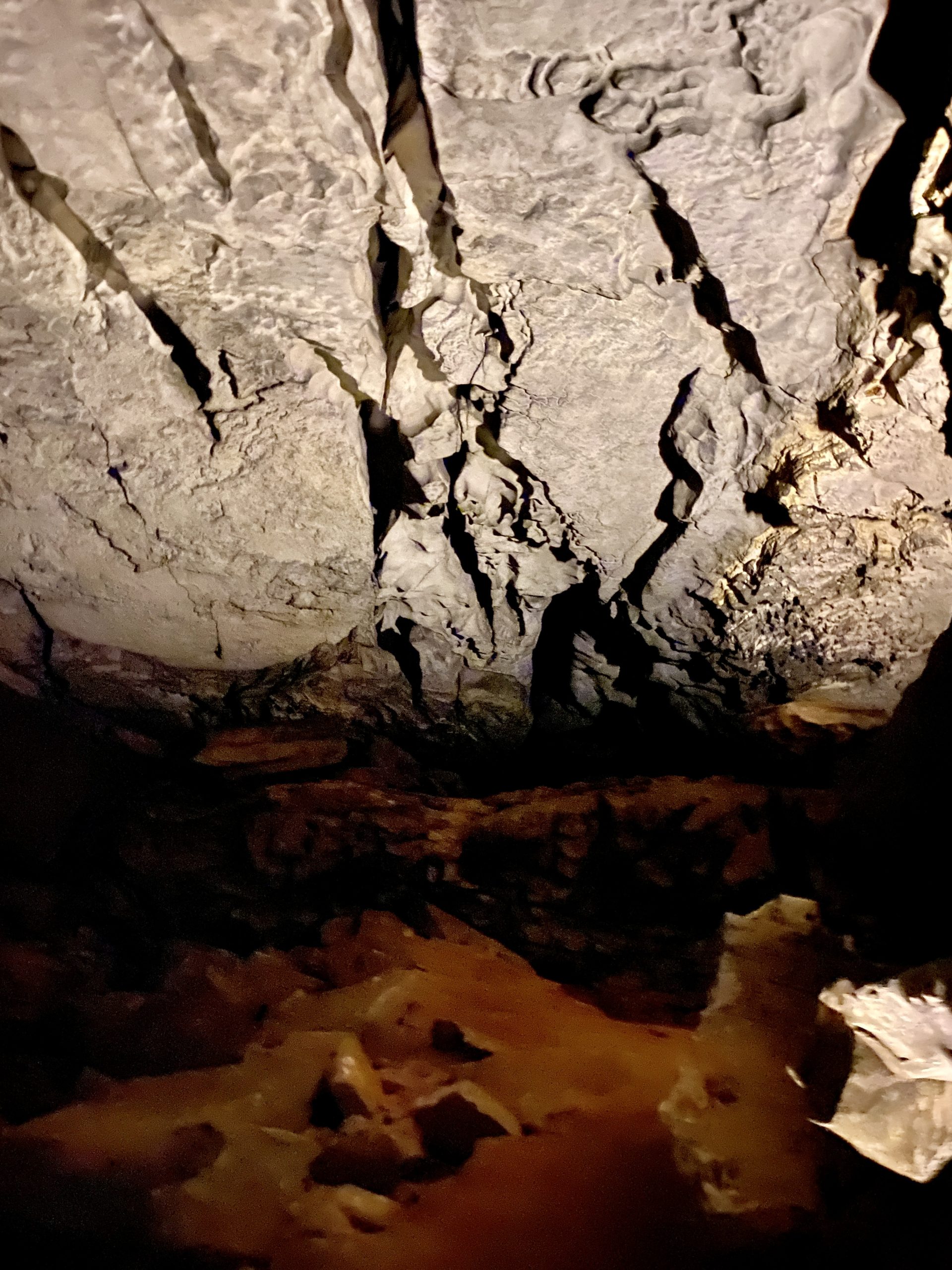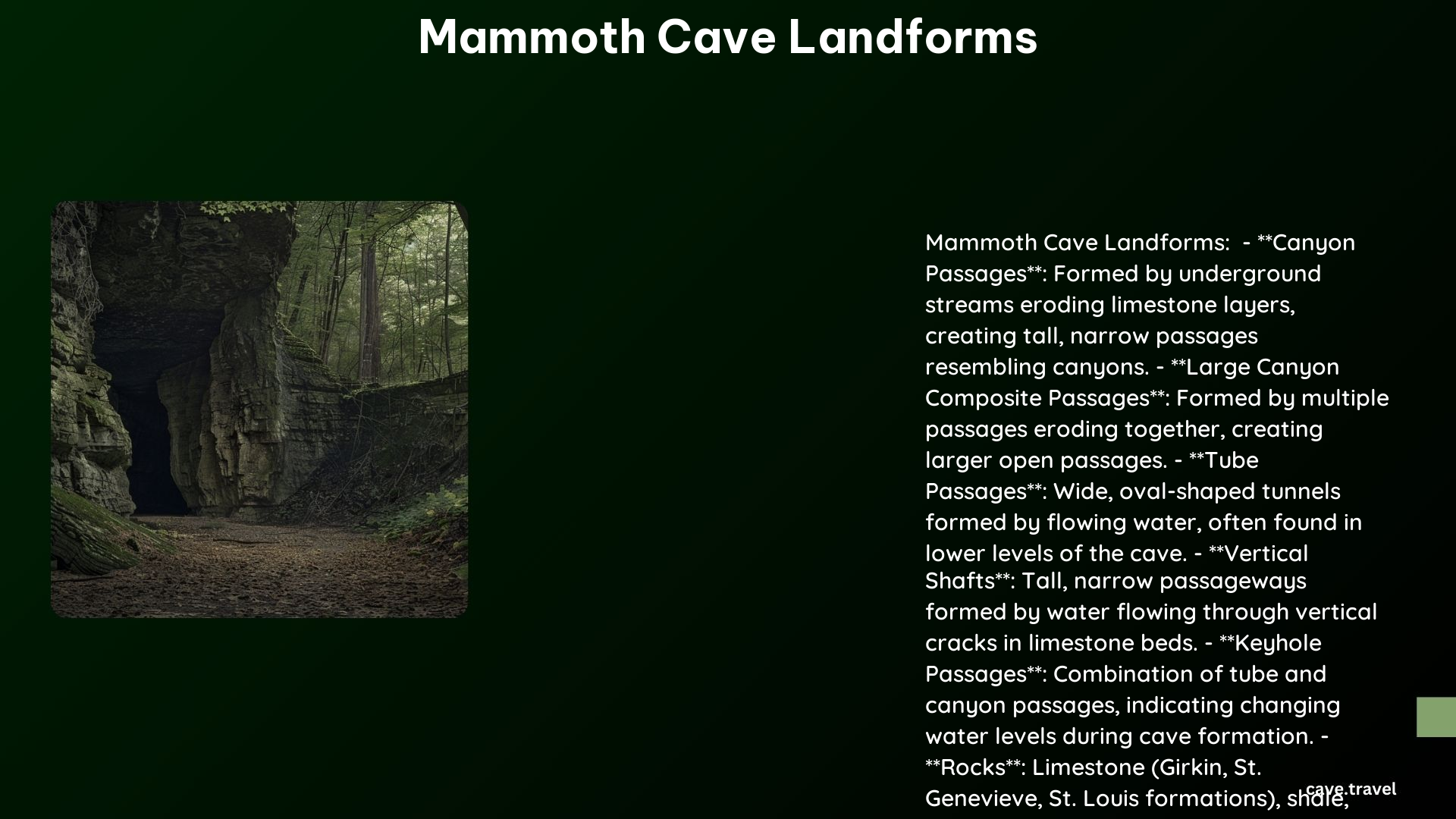Mammoth Cave National Park in Kentucky is a geological wonder, home to a vast network of underground passages and formations shaped by millions of years of karst processes. From towering canyon passages to intricate cave decorations, this subterranean landscape offers a captivating glimpse into the Earth’s dynamic history.
Types of Passages in Mammoth Cave

Mammoth Cave is renowned for its diverse array of passage types, each formed through unique geological processes:
- Canyon Passages: These tall, narrow passages are carved by underground streams flowing along the tilted limestone layers, creating a canyon-like structure.
- Large Canyon Composite Passages: Multiple passages erode together, often from the ceiling or floor of stacked tube passages, forming a larger open passage with additional canyon components.
- Tube Passages: Wide, oval-shaped tunnels that formed while filled with flowing water, found in the lower levels of the cave.
- Vertical Shafts: Tall, narrow passageways that form when water flows through vertical cracks in the limestone, creating straight, gravity-driven shafts.
- Keyhole Passages: A combination of tube and canyon passages, with an oval top and a narrow, vertical extension, indicating changing water levels during the cave’s formation.
Formation of Mammoth Cave Passages

The diverse passages of Mammoth Cave have been sculpted over millions of years through the dissolution of limestone by acidic groundwater. The cave’s rock beds date back to the Mississippian Period, around 359 to 318 million years ago, and the unique geology of limestone, shale, and sandstone has been shaped by the flow of water and the dissolution of minerals.
Other Geological Features in Mammoth Cave
In addition to the intricate passage systems, Mammoth Cave is home to a variety of captivating geological features:
- Stalactites and Stalagmites: Icicle-shaped deposits that form when water dissolves overlying limestone and re-deposits calcium carbonate along the ceilings or floors of the cave.
- Flowstone: Sheets of calcium carbonate that form along cave walls, creating curtain-like draperies.
- Helictites: Strange, branch-like formations that develop in areas with minimal water seepage.
- Cave Popcorn: Knobs of calcite that form where water seeps through pores in the limestone, creating clusters that resemble popcorn, peas, or grapes.
- Rimstone Dams: Formations that grow along floors where calcite-rich water pools, creating dams that expand as more calcite is deposited.
Visiting Mammoth Cave
Mammoth Cave National Park offers visitors the opportunity to explore this geological marvel through a variety of guided tours:
- Historic Tour: Explore the historic sections of the cave, including the Rotunda and Gothic Avenue.
- Grand Avenue Tour: Venture into the vast, cathedral-like passages of the cave’s lower levels.
- Domes and Dripstone Tour: Discover the intricate cave formations, including stalactites, stalagmites, and flowstone.
The park is open year-round, with varying hours depending on the season, and tour rates vary based on the type of tour and the visitor’s age.
References
- National Park Service. (n.d.). NPS Geodiversity Atlas—Mammoth Cave National Park, Kentucky. Retrieved from https://www.nps.gov/articles/nps-geodiversity-atlas-mammoth-cave-national-park-kentucky.htm
- National Park Service. (2021, March 19). How Mammoth Cave Formed. Retrieved from https://www.nps.gov/maca/learn/nature/how-mammoth-cave-formed.htm
- National Park Service. (2023, April 9). Stalactites, Stalagmites, and Cave Formations. Retrieved from https://www.nps.gov/maca/learn/nature/stalactites-stalagmites-and-cave-formations.htm
- National Park Service. (2021, April 13). Geology. Retrieved from https://www.nps.gov/maca/learn/nature/geology.htm
- National Park Service. (2021, May 9). Rocks of Mammoth Cave. Retrieved from https://www.nps.gov/maca/learn/nature/rocks-of-mammoth-cave.htm
